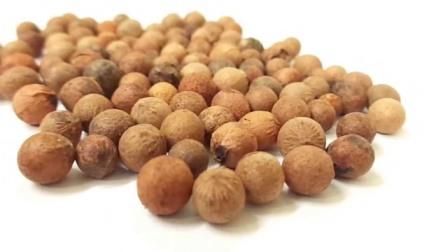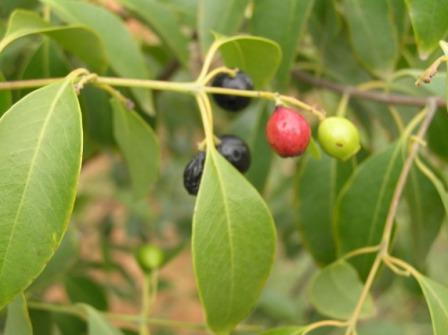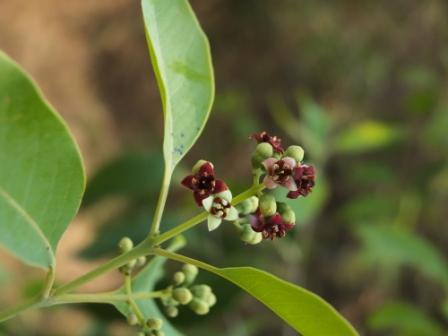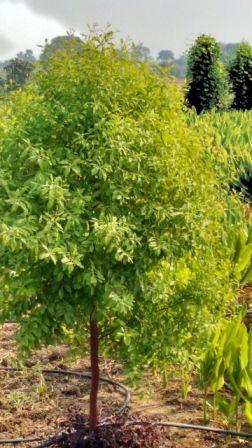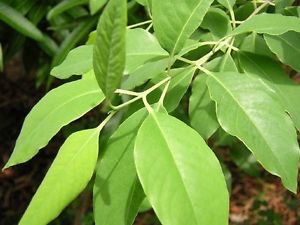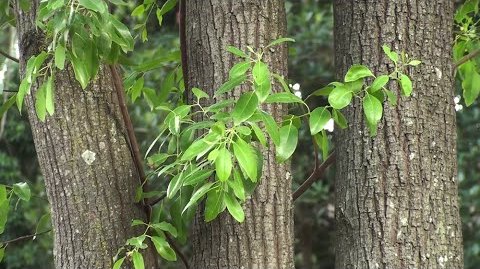Natural Regeneration :
- Through root suckers and also by seeds dispersed by birds.
Seed collection and Storage :
- Sandal fruits are collected fresh from the tree or as soon as they have fallen on the ground during April-May and September-October.
- Depulped seeds give better germination per cent.
- The wet seeds are dried under shade and dry seeds stored in polythene or gunny bags.
- About 6,000 seeds/Kg
- Fresh seeds take 4 to 6 weeks to germinate.
- Eighty percent of seeds are viable up to 9 months.
- Germination is about 60 – 80 % under field conditions.
Seed Treatment :
- Seeds should be treated with Gibrelic (GA3) acid with various concentration
Nursery Technique :
- Sandal seedlings raised standard mother bed size 10m x 1m
- Seed beds are formed with only sand and red earth in the ratio 3:1 Around 2.5 kg seed is spread uniformly over the bed, covered with straw which should be removed immediately after germination.
- When seedlings reached 4 to 6 leaf stage they are transplanted to polybags along with a seed of Tur dhal (Cajanus cajan) and other available leguminous plants for better growth of sandal.
- Host plants are to be pruned frequently, so that they do not over grow sandal and hamper its growth.
- Polybags should contain soil mixture of ratio 2:1:1 (Red earth, Sand: FYM).
- Shifting may be done once in two months to avoid root penetrating into soil .
- Grading should done before planting.
- Weeding is to be done at regular intervals.
- Plantable seedlings can be raised in 6-8 month
Plantation technique :
- Pits of 30 cm3 are dug out at an espacement of 3 m x 3 m.
- First grade seedlings are preferable for planting.
- Host plants are planted in the same pit
- This method has proved successful in many areas.
- Preferable leguminous plants are Casuarina equisetifolia, Pongamia pinnata, Cassia siamea, Alternanthera sessilis, and Sesbania grandiflora.
Care & Disease Control :
- Soil working to a radius of 50 cm once in 6 months is to be done.
- The host plant may be pruned at regular interval.
- Adequate protection against fire and grazing is very necessary.
- Periodical pruning on the lower half of the main stem.
Irrigation :
- Sandalwood crop can be grown throughout the year provided there is enough irrigation facility available.
- When it comes to water requirement, irrigation should be provided at an interval of 2 to 3 weeks when the plants are young especially in hot and summer climatic conditions.
- Go for drip irrigation in regions where water source is limited.
- Sandalwood plant does not require any irrigation in rainy season and make sure to drain out any excess water from the tree basin.
Recommended Harvest :
Yield :
- Heart wood : 8-10 kg/tree *
*Subject to varry according to site factors
Major uses :
- Sandal wood being close grained and amenable to carving, is one of the finest woods for the purpose.
- It is used in making idols and inlay ivory work.
Sandal Wood Oil:
- Powder of heartwood upon steam distillation yields East Indian Sandalwood oil.
- Light colored wood generally contains higher percentage of oil than dark colored.
- The oil content varies from 3% - 6% Sandal Oil has earned a prominent place in agarbathi (incense stick), cosmetic, fragrance and soap industries.
- It also finds its use in medicine as antiseptic, antipyretic etc.
Market details :
Heart wood : Approximately Rs.11000 – 13000/Kg.


